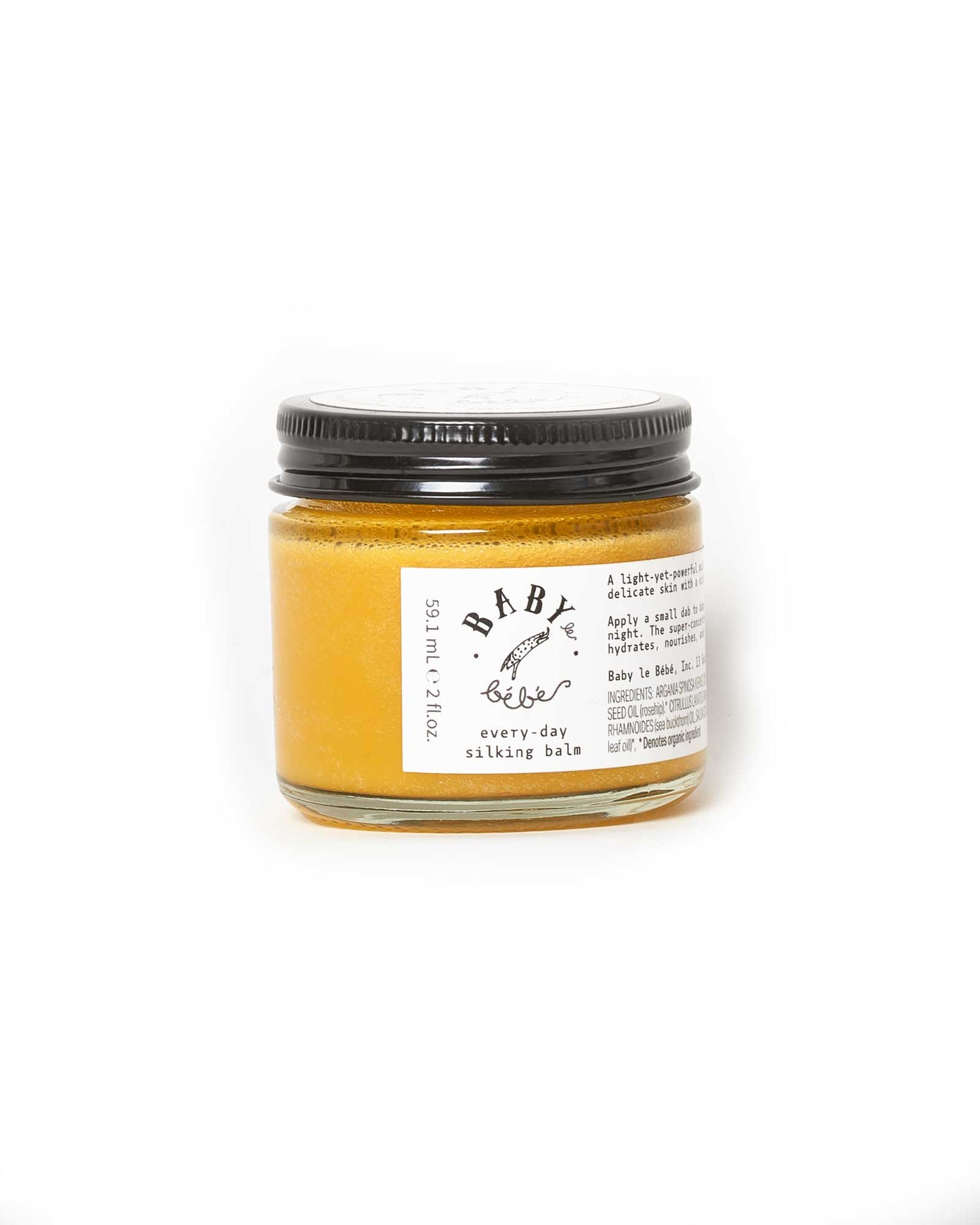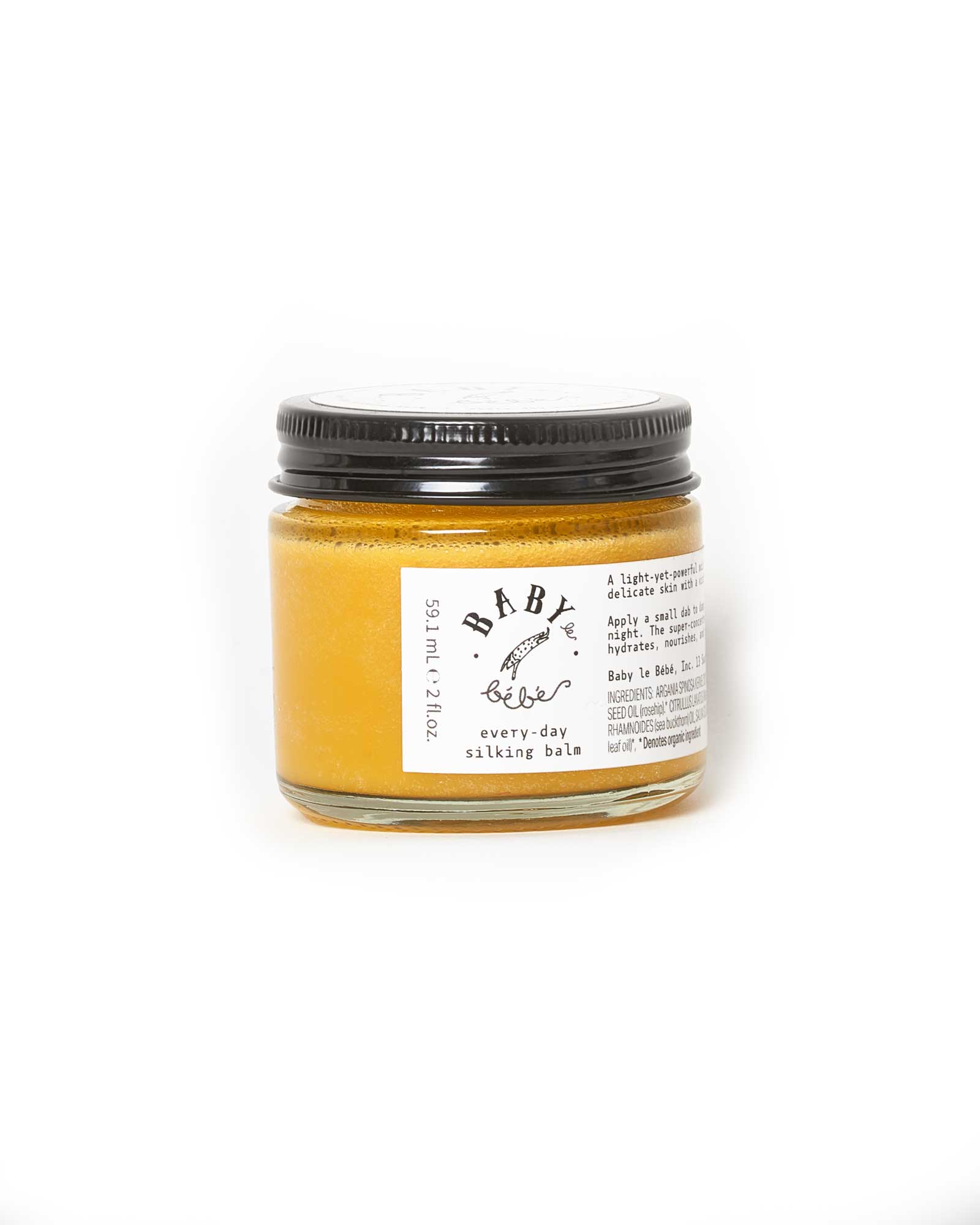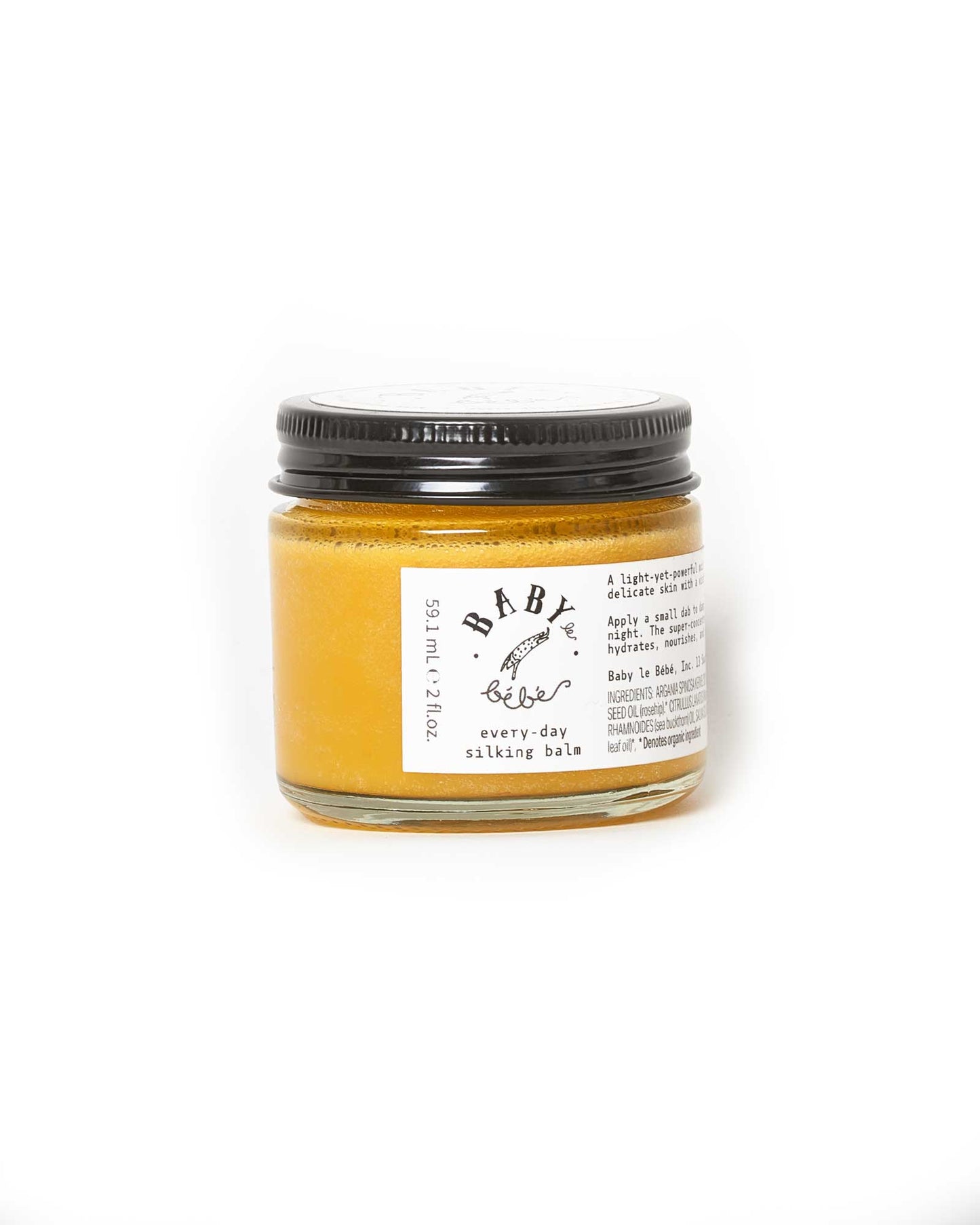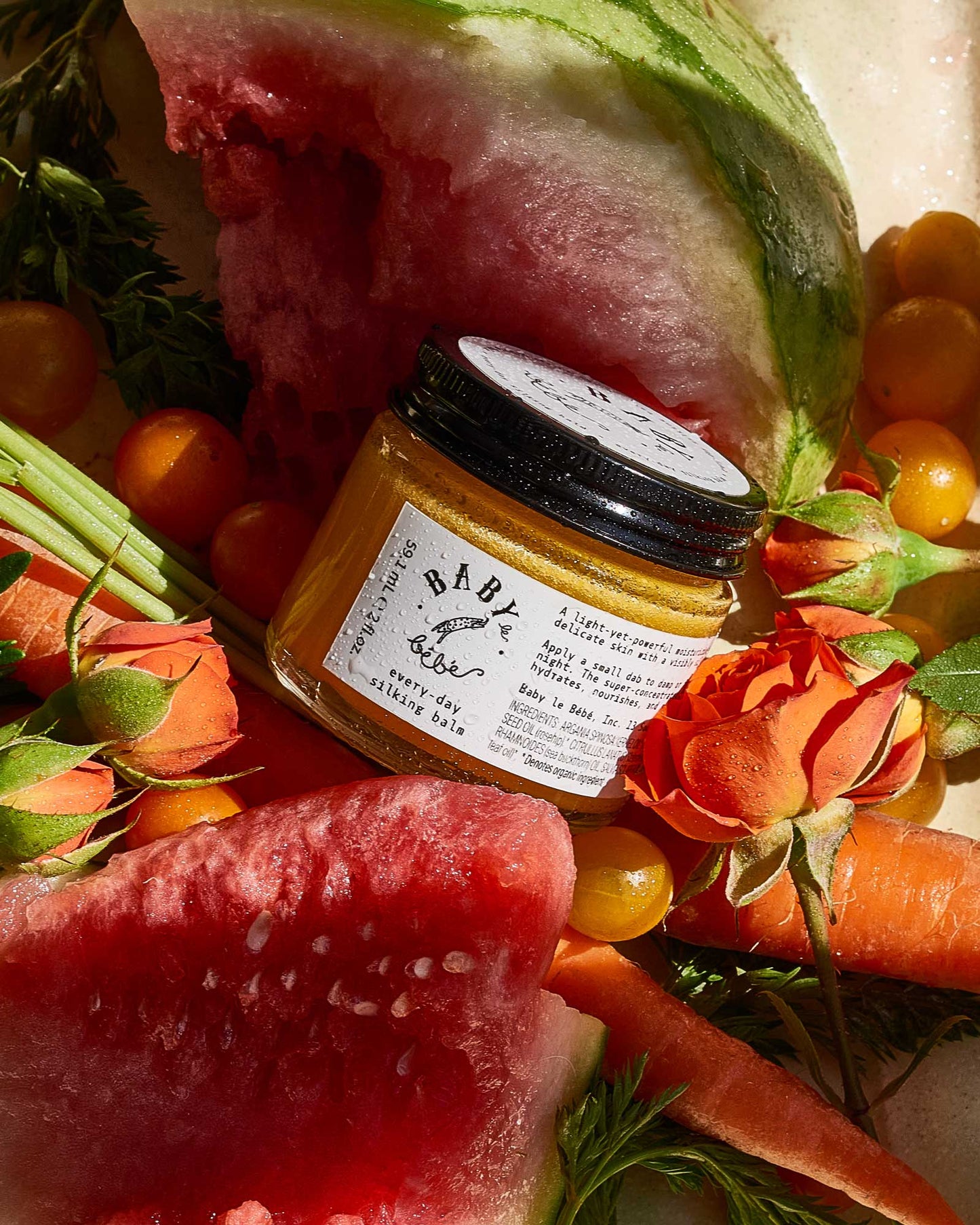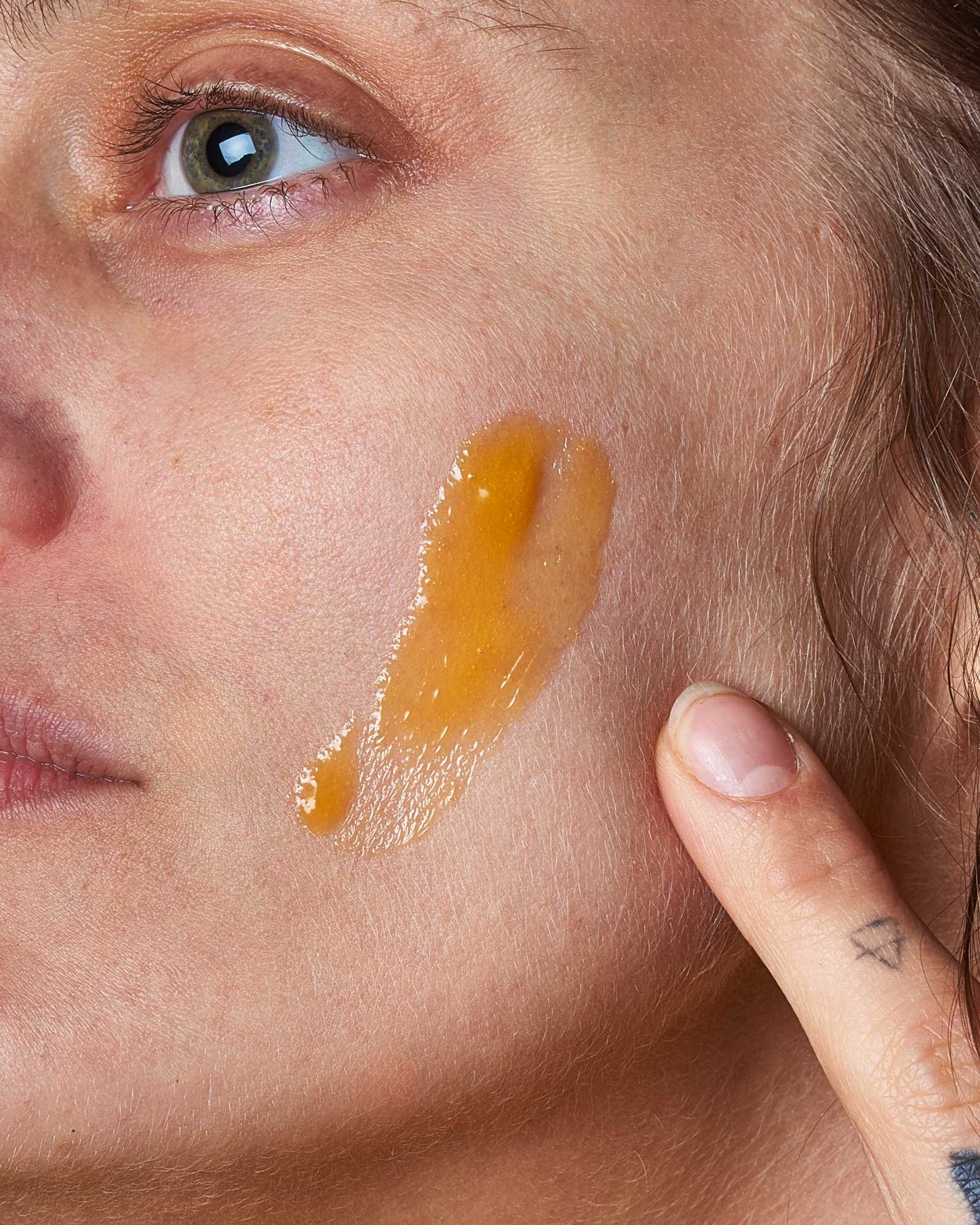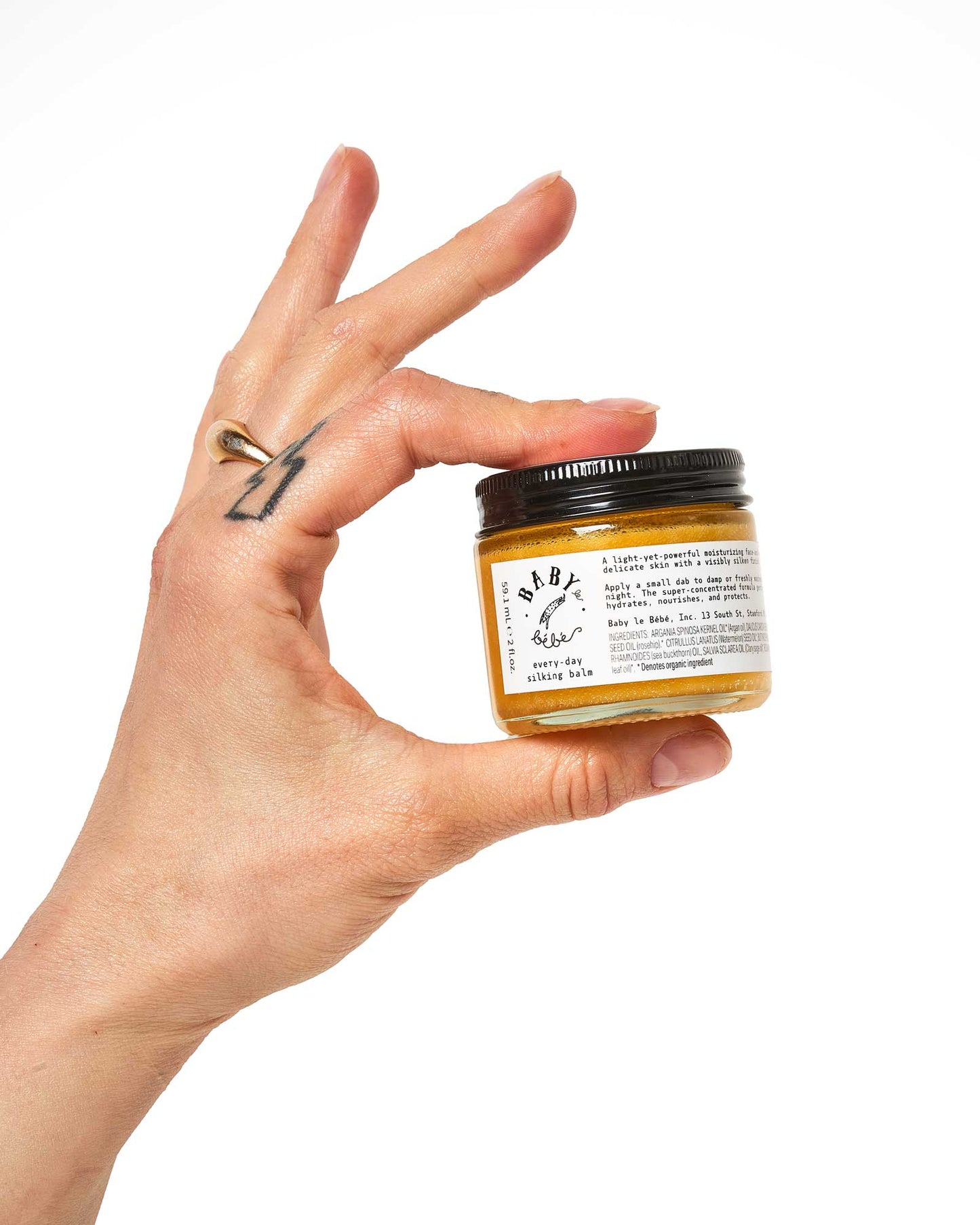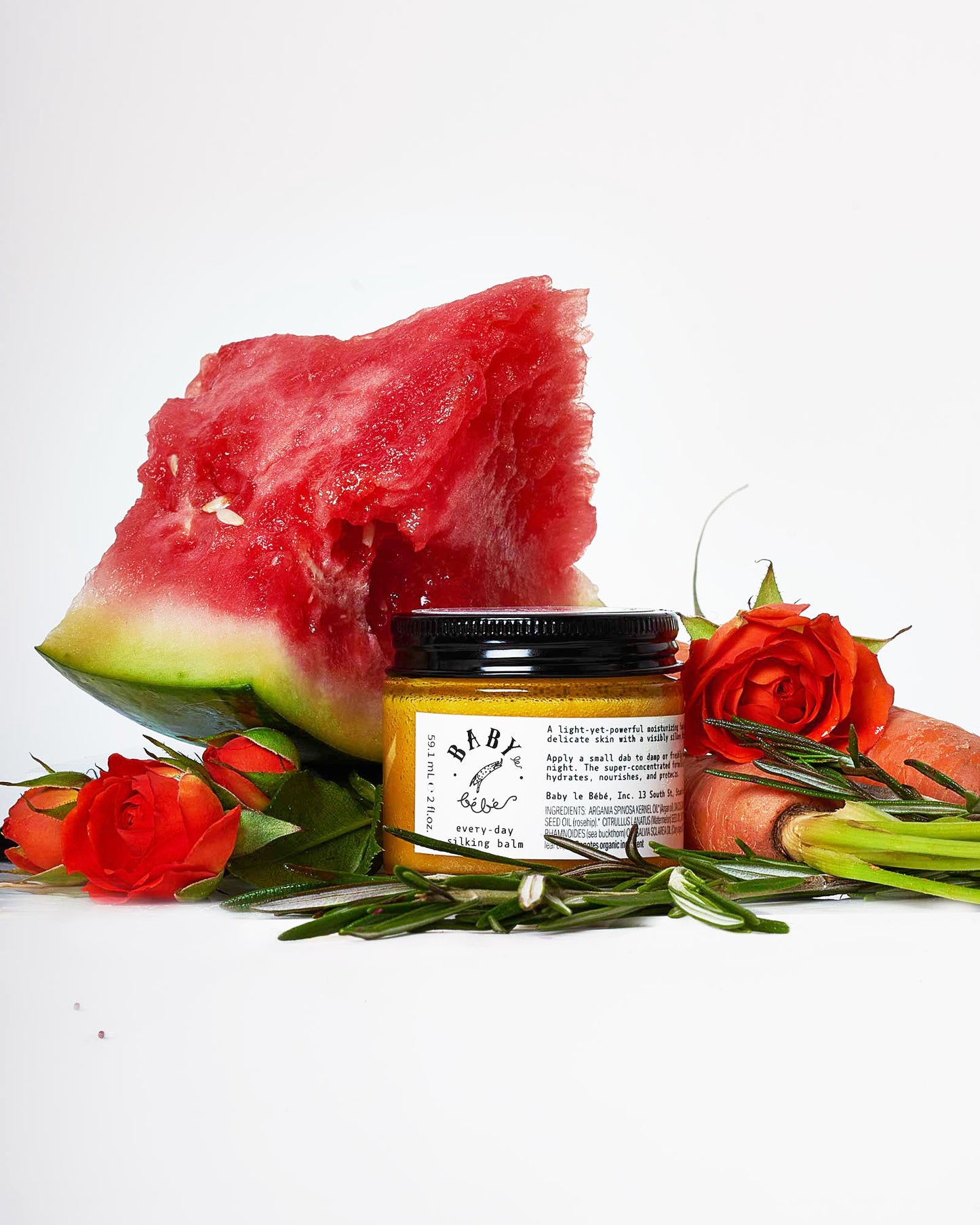Fatty acids are naturally occurring lipids found in plant oils, butters, and in your own skin barrier. They support the structure of skin cells, maintain hydration, and help protect against environmental stressors. Many also have anti-inflammatory properties, making them especially beneficial for sensitive or compromised skin.
In natural skincare, we look to plant-based sources for fatty acids — think cold-pressed oils like rosehip, sea buckthorn, and avocado.
Four Skin-Loving Fatty Acids You Should Know
1. Linoleic Acid (Omega-6)
A true essential fatty acid (your body can’t produce it), linoleic acid helps maintain the skin’s moisture barrier and encourages ceramide production. It’s particularly helpful for acne-prone or sensitive skin, as it helps balance oil levels and reduce inflammation.
Found in: Rosehip oil, sunflower oil, sea buckthorn oil
2. Oleic Acid (Omega-9)
Not essential in the dietary sense, but still incredibly important for the skin, oleic acid is ultra-moisturizing and ideal for dry, mature, or irritated skin. It helps soften texture, repair the barrier, and increase absorption of other ingredients.
Found in: Avocado oil, olive oil, shea butter
3. Palmitic Acid
A saturated fatty acid found naturally in human skin, palmitic acid acts as an occlusive — it helps form a protective film on the skin’s surface to retain moisture. It also has mild cleansing properties.
Found in: Shea butter, sunflower oil
4. Stearic Acid
Another barrier-supporting saturated fat, stearic acid acts as both an emollient and a stabilizer in skincare. It softens the skin and enhances product texture, especially in rich balms and creams.
Found in: Shea butter, avocado oil
5. Alpha-Linolenic Acid (Omega-3)
Best for: Inflammation, sensitivity, and skin repair
Alpha-linolenic acid (ALA) is an essential omega-3 fatty acid that helps calm inflammation, reduce redness, and support overall skin healing. It strengthens the skin’s protective barrier and plays a key role in improving texture and tone — particularly in dry, irritated, or environmentally stressed skin.
Found in: Rosehip oil, flaxseed oil, chia seed oil, hemp seed oil
How to Work Fatty Acids into Your Routine
Fatty acids are most effective when they’re part of a formula that allows them to stay on the skin — not rinse away. That’s why leave-on products like facial oils and balms are ideal for delivering them deep into the skin barrier, where they can do their restorative work.
If you’re working toward a simplified, natural routine that genuinely supports your skin's health, choosing a product that’s naturally rich in these fatty acids can make all the difference in your skin barrier.
The Takeaway: Good Fats Are Good Skincare
Whether your skin is dry, breakout-prone, or somewhere in between, topical fatty acids are key to barrier health, hydration, and long-term resilience. They’re not trendy — they’re foundational.
Look for products made with cold-pressed, plant-based oils and butters, and pay attention to ingredient profiles that include linoleic, oleic, palmitic, Alpha-Linolenic Acid (Omega-3), and stearic acids.
If you’re looking for a balm that delivers all four — plus the softest, silkiest finish — we know one ;)
-
Rawlings, A.V., & Harding, C.R. (2004). Moisturization and skin barrier function. Dermatologic Therapy, 17(s1), 43–48. https://doi.org/10.1111/j.1396-0296.2004.04s1005.x
-
Kochhar, A. (2017). Essential Fatty Acids and Skin Health. International Journal of Molecular Sciences, 18(11), 2292. https://doi.org/10.3390/ijms18112292
-
Ziboh, V.A., Miller, C.C., & Cho, Y. (2000). Metabolism of polyunsaturated fatty acids by skin epidermal enzymes: generation of anti-inflammatory and antiproliferative metabolites. American Journal of Clinical Nutrition, 71(1 Suppl), 361S–366S. https://doi.org/10.1093/ajcn/71.1.361s
-
Dweck, A.C. (2005). Formulating with Shea Butter. Cosmetics & Toiletries, 120(12).
– Cited for stearic and oleic acid content in shea butter and other natural emollients. -
Kanitakis, J. (2002). Anatomy, histology and immunohistochemistry of normal human skin. European Journal of Dermatology, 12(4), 390–399.
-
USDA Agricultural Research Service. (2008). USDA Database for the Fatty Acid Composition of Selected Foods, Release 3.0.
– Reference for fatty acid profiles of avocado oil, sunflower oil, rosehip oil, flaxseed oil, and others.
https://fdc.nal.usda.gov/ -
Calder, P.C. (2016). Omega-3 fatty acids and inflammatory processes: from molecules to man. Biochemical Society Transactions, 45(5), 1105–1115. https://doi.org/10.1042/BST20160474
